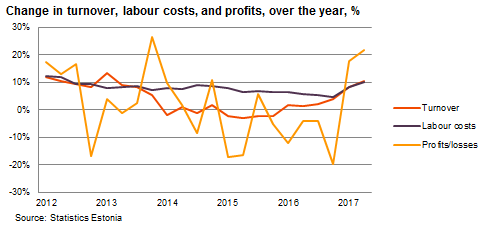 Wage growth will remain relatively high as labour demand increases more than supply.
Wage growth will remain relatively high as labour demand increases more than supply.- Nevertheless, the gap between wage and productivity growth rates will narrow this year.
The growth of the average gross wage accelerated in the second quarter (+6.8%, over the year), partly due to a base effect. According to our estimates, economic growth remained fast and the number of employed decreased in the second quarter, so the gap between the growth rates of wages and productivity continued to narrow.
Higher sales help companies cope with growing labour costs. Enterprises’ sales increased by 10% and profits grew by 22%, over the year, in the second quarter. Profits rose in most economic activities.

The rapid growth in the average wage is supported by a lack of suitable labour and a 9.3-percent increase in the minimum wage. The labour force participation rate was the highest in 20 years in the second quarter. The number of vacancies reached the highest in 8 years in the first quarter. The lack of suitable labour is the most important factor restricting business for a quarter of manufacturing and service companies and a half of construction companies, according to a survey by the Estonian Institute of Economic Research. Nevertheless, the growth of the average gross wage in the construction sector remained around the average in the whole economy in the first half of the year.
Average wages rose in most sectors. Wage growth was faster in the energy sector where wages grew modestly in the past due to a substantial decline in energy prices. The shortage of labour pushed up wages in IT. Average wages remained unchanged in the real estate sector and grew only slightly in the primary sector. In agriculture and real estate, profits have been smaller than in the past and the rate of job vacancies lower than the average in the total economy.
In 2017, the purchasing power of employees is expected to grow slower than during previous years as inflation accelerates. The real growth of the average net wage rose by 3.7% in the first quarter of this year. This will limit households’ consumption. Retail sales volumes grew by only 2.3% in the first half of the year.
In 2018, wage-earners’ labour income will jump up again, due to a substantial increase in their nontaxable income. This change in taxes could also lower their wage expectations for next year. Wage growth will remain relatively high as labour demand increases more than labour supply. Labour productivity is expected to improve and the gap between wage and productivity growth rates to narrow in 2017-2018.
















